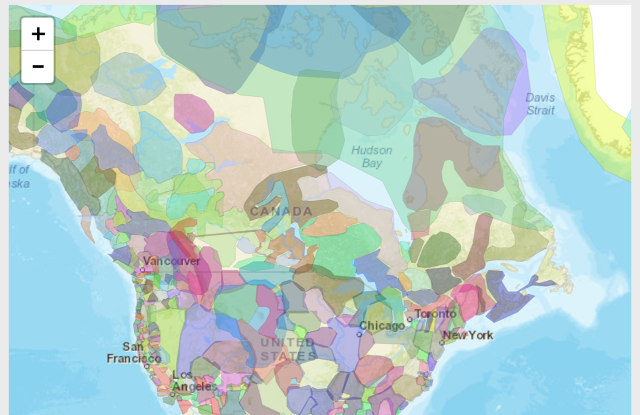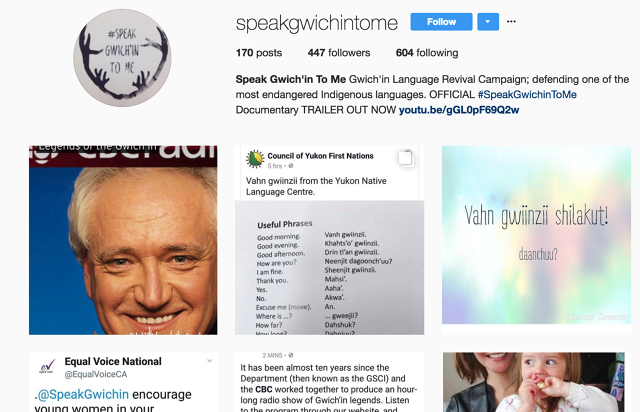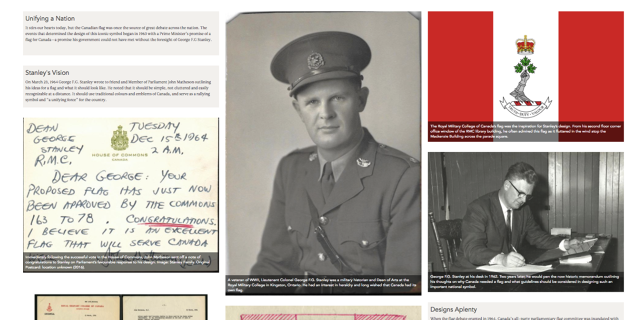Oct 22, 2017
Why Cultural Preservation Is More Relevant Than Ever Before With Technology & Social Media
The rise of social media has created a revolutionary and inspiring movement in the First Nations community to share about their culture. Social media platforms like YouTube, Facebook, Twitter, and Instagram are making cultural preservation more accessible than ever, especially in First Nations communities.
A study conducted in Australia found that Indigenous people worldwide are now more active users of social media than non-Indigenous populations across all generations. The study found that the “similarities of experiences with colonisation” sparked a global collective discussion in which people affected by colonisation “relate to, engage with and support each other on social media” across the world.
Members of these communities are able to showcase their culture, sharing traditional ceremonies, song, dance and oral history through video streaming. This not only engages the younger population and encourages them to learn more about their culture, but gives an opportunity for all Canadians to participate, bringing a new level of understanding, interest and cultural awareness that could never be achieved without the help of technology.
In a recent article from The Guardian, Bronwyn Carlson, an associate professor of Indigenous Studies in Australia, says online communities build connections that had been fractured by the mass migration into urban centers. In an online social media-driven survey conducted to study the experience of Indigenous people on social media, one anonymous participant said:
“We can’t undervalue these sorts of virtual communities that we set up … they’ve got meaning and, you know, they do fill a space. They break down those barriers of land and distance in order to actually link people together. So people do form networks and friendships and inspire each other through it. Like I said, social media is real life now.”
As we look at the role that technology has played in making it easier to express identity, build friendships and preserve culture, technology has also given these communities the opportunity to tell their story on a national and even global level. Whether it's sharing their language or pushing back against #Canada150, technology has given a megaphone to people who have struggled for years to make their voices heard.
While there are benefits of using social media for cultural preservation that we are still learning about, there are certain benefits we know:
Social media raises cultural awareness and sparks cross-cultural dialogue
The #Canada150 hashtag was originally created to celebrate the 150th anniversary of Canada’s confederation, but became a site of heated debate in the weeks leading up to Canada Day, being picked up by those who used it to celebrate the occasion and also by those with a more critical view. The hashtag acted as fuel, linking the resistance against Canada 150 celebrations. It sparked a national discussion of how to celebrate 150 years since Confederation while also acknowledging how much work in reconciliation still needs to happen.

Social media keeps communities in touch with their language and history
The hashtag #SpeakGwichinToMe pushed forward a language revival campaign to inspire Canadians to learn more about the Indigenous language Gwich’in through Instagram, YouTube, Twitter and Facebook. There are less than 300 Gwich'in speakers left in Canada. The campaign is inspiring not only members of the Gwich'in community, but also other communities whose language is at risk. There are 60 distinct Indigenous languages in Canada.

The campaign was started by a 23-year-old named Jacey Firth-Hagen, an Indigenous woman from Inukvik in the Northwest Territories in Canada. She created a Facebook group called the “Gwich'in Language Revival Campaign” which now has almost 1,000 members. The goal of the project has always been to spread awareness about how Canada is in danger of losing the Gwich’in language, and more generally, how language loss affects community and personal identity. She regularly posts updates about phrases, prayers, stories, and updates on the campaign. She always includes the hashtag #SpeakGwichinToMe but often also includes #ILoveMyLanguage, #LanguagesMatter, #LanguageLearning, #IndigenousLanguages, #LanguageRevitalization, #MyLanguageMatters, #Gwichin.
Canadian director Edward de Juan is making a documentary about the project which will be released later in 2017.
A Gwich'in speaker featured in the documentary believes that her language is “more Canadian than Canadian” and that “speaking the language is the biggest part of [her] identity” because the language is “where the Gwich'in knowledge lies.”

Social media gives younger people access to cultural traditions
It has become common to see people sharing live video feeds and uploading recordings of traditional ceremonies to Youtube and Facebook—though there remains a sense of restraint, as broadcasting these sacred ceremonies is considered intrusive or even disrespectful by some within Indigenous communities.
Desiree Morriseau is an Indigenous, Anishinaabe woman from Winnipeg who has been attending Midwewin (a secret Anishinaabe medicine society) ceremonies with her family for many years. She prefers to spend time with her family privately during ceremonies and thinks that staying plugged in during the event distracts from its value. She also believes that when ceremonies are shared on social media, "there's always more room for interpretation. ... I think it loses a lot of its understanding and its value when you're not there committed at that moment in time."
For others, the possibility of sharing these moments respectfully with others who could not be there is more important than the absolute privacy of the ceremony. Ivana Yellowback, a cultural mentor who works with Indigenous youth in the child welfare system, believes that sharing these traditional ceremonies on social media breaks stereotypes and showcases the true beauty of her culture:
"Instead of a trap house, let's show you what a sundance arbour looks like… Being able to provide something visual for a lot of our young people, because when they're able to see images, it sticks to them a lot more."
The ability to watch a ceremony that is not preformative or staged, but authentic and streamed live from the event, is a rare privilege of our time. This ability is so new that there are not yet established codes of conduct about where or when it is appropriate to livestream an event. While Facebook and Youtube reach millions of people through their platform, it is difficult to regulate what content is appropriate or relevant. Codex strives to produce an online viewing experience that is both respectful of the sacred tradition and also informative, interesting, and accessible to people around the world. For example, this video recorded by the CBC in 2016 shows a rare, yet restrained view into a Mi’kmaq wedding ceremony. It is short, curated, and narrated to shed light on what is happening and why the couple wanted to share their intimate ceremony in this way:
Social media builds strong communities, even from a distance
Facebook groups like #SpeakGwichinToMe offer a place for genuine discussion and community building, even across social and geographic borders. They are open to anybody who has an interest and provide a safe space for people to ask questions, search for feedback on new ideas, and connect with other members of their community sharing stories about their history, rally around causes which are meaningful to them, or communicate experiences of racism and discrimination.
Social media creates a living archive of the day-to-day life within a community
Until very recently, we’ve relied on memory and stories passed through oral history to act as an archive of day-to-day life. Social media has changed this dramatically. It’s now easier than ever to ensure that messages being passed down are not lost in translation and that cultural influences in a community have a voice that will last for years to come.
Codex has the ability to transform a collection of digital media such as video, audio and imagery into an interactive story. This story is a living collection of art, music, dance, and more. This screenshot shows a view of the “Behind the Design” exhibition from Codex. The exhibition combines archival documents in the form of letters, sketches, and photographs. It also includes oral history in the form of a video of Dr. Della Stanley, sharing the story of Canada’s flag and her father’s role in its design.

Codex offers a place to share oral storytelling projects and interviews. The platform makes it easy to share knowledge through instructional or “how-to” content, and build language based content for teaching or engagement similar to #SpeakGwichinToMe’s campaign. Codex describes and collects information about what “place” means and how boundaries and nations transform over time, telling dynamic stories of geography and people.
Conclusion
The social media landscape and increased access to technology has changed everything about our culture and how we communicate with each other. Social media is playing a huge role in cultural preservation and cultural networking, one that even twenty years ago could not have been anticipated. We have a tremendous opportunity to learn and connect with each other in ways that have never been possible before.
Please let us know your thoughts on cultural preservation and technology, and how you see this happening in your own communities. Have you been to a traditional ceremony that was being live streamed or videotaped? Do you think technology has a place in sacred spaces? Send us an email. We would love to hear what you think.
Share this article with your friends on Twitter or Facebook to ignite the discussion. If you have become inspired to begin your own cultural preservation project, sign up for Codex here.
.jpg&size=640&modified=1508691589952)
